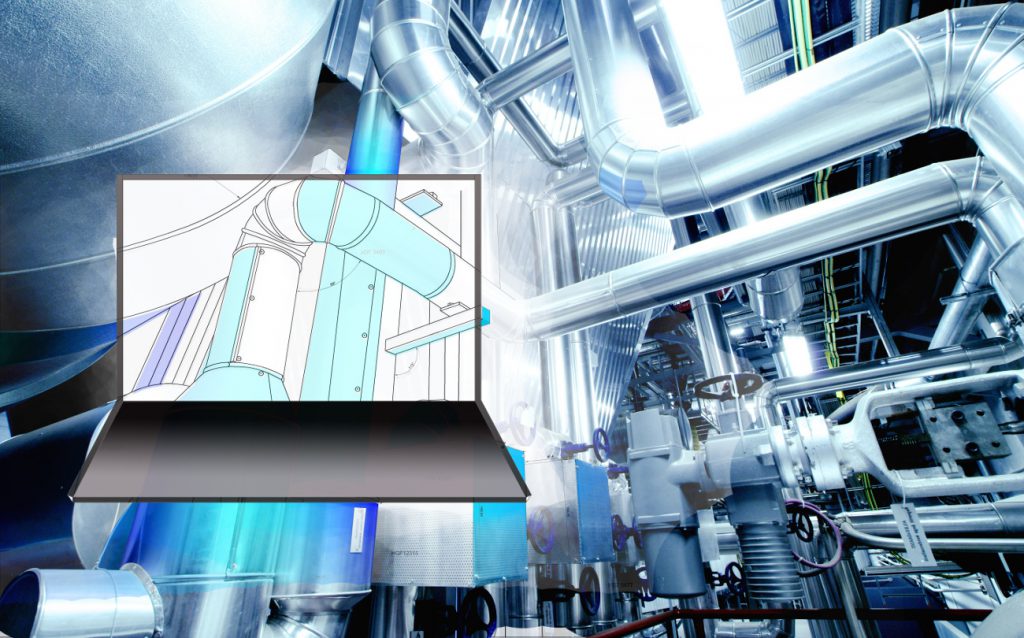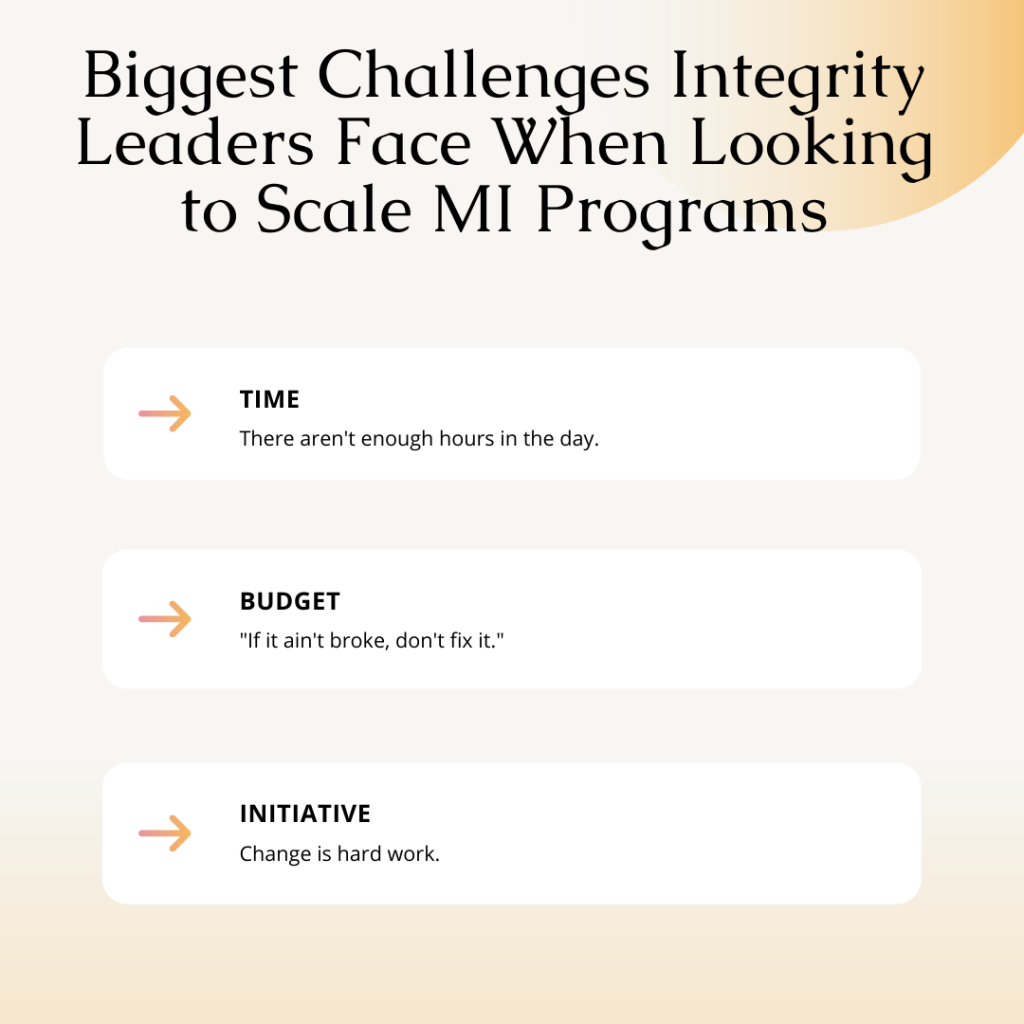
1. What Mechanical Integrity program improvements will deliver integrity and reliability performance?
Visualization and Digital Twins:
For me personally, visualization is critical to enhancing any program. Whether I am looking at a spreadsheet, an inspection report, an engineering specification sheet or U1A, visualization of a digital twin helps me visualize the equipment and its degradation locations. Sometimes, when I don’t have visualization tools, I physically draw it out on a white board to “see” what problem I’m working to solve for the equipment. Seeing is believing, and for me, being able to see the mechanical integrity issues are paramount to enabling good decisions.
What does this mean?
If I can replicate my facility, asset, and/or equipment in digital form (e.g., digital twin) then I can more easily analyze, plan, execute, and review my equipment; therefore, enhancing the performance of integrity and reliability of a facility.
This “digital twin” is a digital version of the equipment that accurately represents the real asset with real data such as design, operation and process, and history. This allows me to manage higher amounts of equipment to problem solve and optimize their integrity plans with real-world risks.

Confidence-Based Mechanical Integrity:
What if I could utilize the digital twin data to ensure I am making the most confident decisions and not just utilizing risk-based decisions for my advanced mechanical integrity methodologies? In other words, instead of only relying on the decisions that utilize traditional and risk-based methodologies, what if I could utilize more data and more advanced methodologies to ensure the decisions I am making about my equipment (i.e. longer inspection intervals, reduced inspection scopes, etc.) are made with higher confidence than the traditional methodologies? This is possible through Confidence-Based Mechanical Integrity (CBMI). If digital twin data is available to make these decisions, then in addition to a great mechanical integrity program, we can cross check our decision making to ensure we are confident on the approaches utilized. This way, we start making decisions using our actual data and relying less and less on models developed as a generalization. This is Confidence-Based Mechanical Integrity. I’ll share more on this in a later post.
2. What are some of the most common resources and/or digital challenges integrity leaders face when looking to scale the Mechanical Integrity program?
It seems that the three biggest constraints are time, budget, and initiative.

- Time: There isn’t enough time in the day to ensure reliable and safe operations AND build an optimized mechanical integrity program.
- Budget: There just doesn’t seem to be enough budget to invest into a mechanical integrity program when the current program is “good enough” or “meets regulation” requirements. This is true to a certain extent; however, it’s just like an older house or vehicle. At some point, you need to replace that vehicle or remodel that house if you want to take advantage of the newest technologies, efficiencies, and enhance reliability.
- Initiative: It’s a risk to go to executive leadership, ask for capital budget, and explain you want to change the system that seems to be working. To explain you want to digitize and transform a department that has relied on field sketches, spreadsheets, and getting dirty because it will make it easier, safer, and more cost effective may seem daunting and bold. Not everyone is willing to upgrade an organization’s program.
Once you move past the time, budget, and initiative obstacles, it’s a process to take your mechanical integrity data, integrate it into new digital tools, and train your teams to take advantage of the future techniques of asset integrity and mechanical integrity.
3. What should organizations consider when looking to integrate new and existing Mechanical Integrity capabilities and technologies?
It sounds like a bit of a sales pitch coming from me, but organizations need to bring in outside expertise to support their existing team and help them establish the future of their mechanical integrity program. The current team is there to sustain operations but not necessarily to change and upgrade the program. Outside expertise, such as our team at Cognascents, will implement an upgraded program to ensure the current team can utilize the upgraded technology and methodologies with success. Having this outside support will enable the existing program and resources to more easily integrate into the new, updated mechanical integrity program.
Outside expertise allows the support needed to integrate new programs. Seamless transitions to new technologies and methodologies are critical to future success.
Another consideration for an organization is to involve other departments in the transition towards the future of the mechanical integrity program. Departments such as process engineering and process safety would benefit from the digital twin and enhanced mechanical integrity data. Departments can contribute budgets and resourcing responsibility toward the joint goal of “digital twins”. This sharing of resources and responsibilities could lead to the future of the mechanical integrity program being achieved sooner rather than later.
4. How can companies measure their progress in capturing the value of their Mechanical Integrity initiatives?
Measuring the value of a future-proof mechanical integrity program will be different for every organization. Some organizations will see measured improvements by decreasing their turnaround inspection requirements by up to 75%, which translates into large budgetary gains. Other organizations will see an increase in inspection budgets, but this converts into increased reliability, decreased failures, and additional budgetary gains. Intrinsic value for one organization may be completely different that intrinsic value to another organization. However, everyone understands extrinsic value aka revenue.
Looking for the best way to measure value? Ask yourself, “Can this be done better?” If the answer is yes, write down three pain points that always bother you. For example,
1. We don’t understand how all the assets can fail and why.
2. We don’t have reliable information and always must cross check data to ensure its correctness.
3. We always inspect the same thing every turnaround and everything is fine.
If your organization has any of these issues, then value is achievable, and will translate to additional budget savings.
Cognascents is here to help identify and solve your mechanical integrity issues in order to ensure your organization’s success. It is our goal to assist in the transformation of your mechanical integrity program in order to optimize and future-proof your program. Give us a call. We’re here to help.